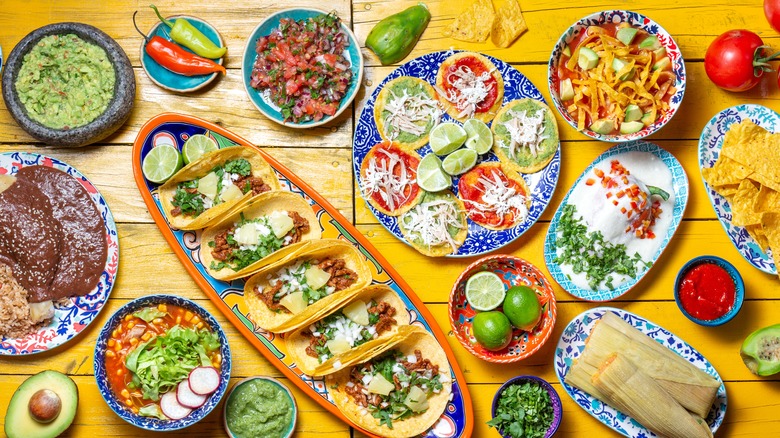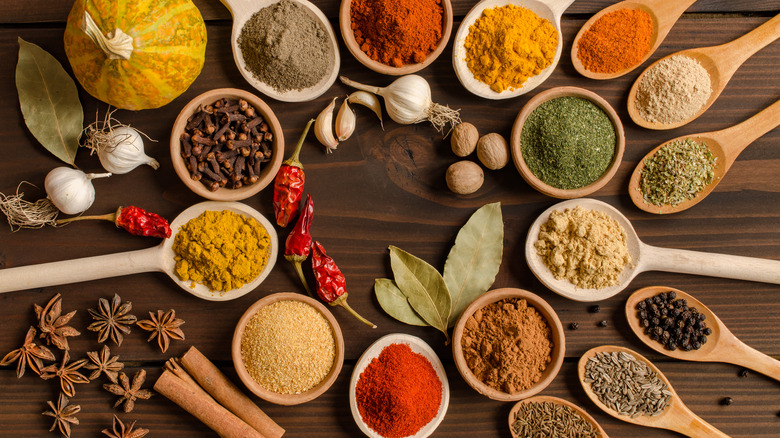This Important Mexican 'Seasoning' Isn't An Ingredient At All
When talking about food and cooking, we can all agree on one thing: life would be pretty bland and boring without the wide variety of spices and seasonings. They're used to enhance the flavor of food, and sometimes add new flavors altogether. Spices and seasonings can be used whole, powdered, or as a part of a spice blend, notes Alimentarium. You've probably used at least one (if not more) spice blend in the past.
For example, the Indian garam masala is a pungent mix of cumin, coriander, cardamom, cloves, cinnamon, and black pepper, and it's often used when making curries. China has its five-spice powder that's great in desserts and meat dishes, especially pork. And you might've also heard about the Ethiopian berbere spice blend, made with hot peppers, fenugreek, and cinnamon (via Martha Stewart).
In the U.S., most people are familiar with Old Bay Seasoning, originating from Maryland and consisting of 18 spices and herbs. It's mostly used on seafood but can be added to anything you're eating (per Chili Pepper Madness). Further to the south, we can enjoy Mexican cuisine that's famous for its spices, however, in Mexico, there's one crucial seasoning that isn't an ingredient at all.
A new type of sazón is created each time you're cooking and seasoning food
Mexican cuisine is well-known for being vibrant, colorful, fresh, and spicy, while some of the staples in Mexico include beans, corn, and a variety of traditional dishes such as tortillas and tamales. However, each region has its typical cuisine and ingredients (via SBS). The most common spices used in Mexican cooking include the likes of Mexican oregano, Mexican bay leaf, cumin, annatto, epazote, coriander, and, of course, a wide array of hot peppers, explains Nature's Path.
But there's also one essential seasoning that isn't a seasoning at all! NPR reveals that it's called sazón, and can be roughly translated as magic in the kitchen. Sazón typically refers to the flavors that develop as you cook and season a dish, making it uniquely yours in the process. So, it can be said that sazón is subjective, and each cook will have a slightly different one. Bricia Lopez, the author of "Oaxaca: Home Cooking from the Heart of Mexico," says that being playful and creative when cooking is key to getting a great sazón.

